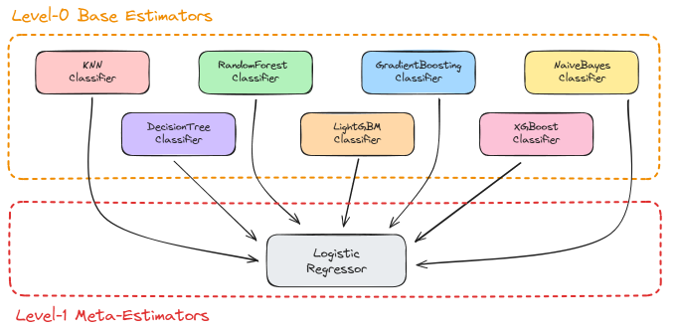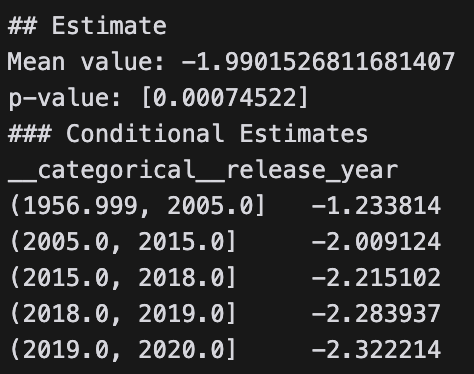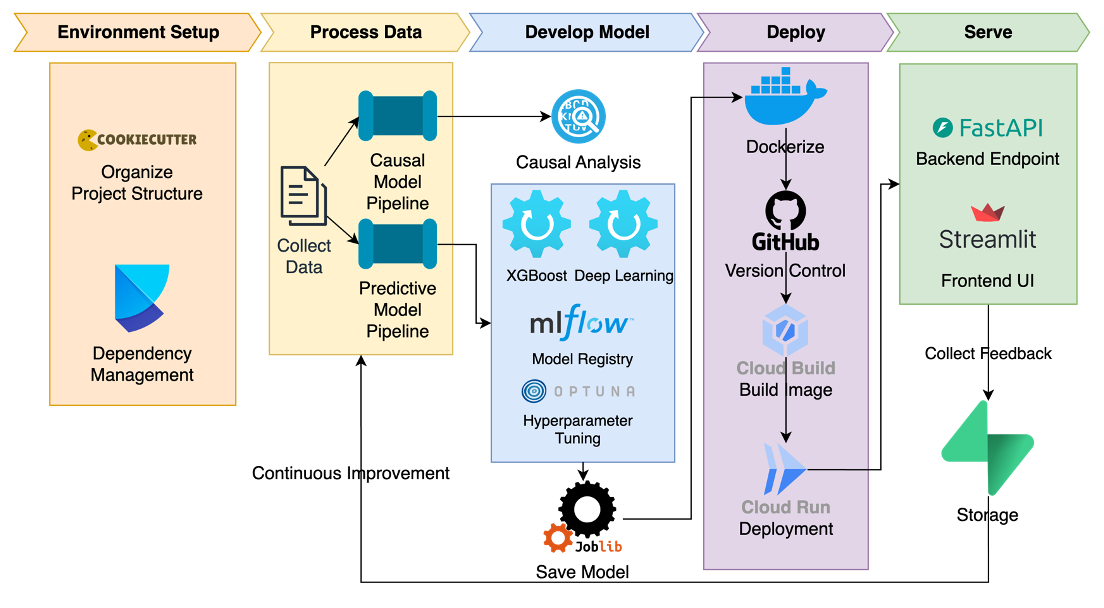- Arnav Gupta
- Freddy Chen
- Jatin Suri
- Lakshya Agarwal
- Om Sangwan
- Yiyi Yang
- Om Sangwan
- Yiyi Yang
- David Gao
- Emily Wu
- Yifan Lu
The dataset we are using is the Spotify - 30000 songs.
We aim to uncover patterns and relationships that drive song popularity to empower artists and producers with the knowledge to make smarter, evidence-based decisions. We will be using the Spotify dataset to analyze the features of songs and their popularity. We aim to build two models:
- Predictive Model for Song Popularity
- Causal Model for Song's Duration Effect on its Popularity
The results show a statistically significant negative causal relationship between the duration of a song and its popularity that increases with time.
├── LICENSE
├── Makefile <- Makefile with commands like `make data` or `make train`
├── README.md <- The top-level README for developers using this project.
├── data
│ ├── external <- Data from third party sources.
│ ├── interim <- Intermediate data that has been transformed.
│ ├── processed <- The final, canonical data sets for modeling.
│ └── raw <- The original, immutable data dump.
│
├── docs <- A default Sphinx project; see sphinx-doc.org for details
│
├── models <- Trained and serialized models, model predictions, or model summaries
│
├── notebooks <- Jupyter notebooks. Naming convention is a number (for ordering),
│ the creator's initials, and a short `-` delimited description, e.g.
│ `1.0-jqp-initial-data-exploration`.
│
├── references <- Data dictionaries, manuals, and all other explanatory materials.
│
├── reports <- Generated analysis as HTML, PDF, LaTeX, etc.
│ └── figures <- Generated graphics and figures to be used in reporting
│
├── requirements.txt <- The requirements file for reproducing the analysis environment, e.g.
│ generated with `pip freeze > requirements.txt`
│
├── setup.py <- makes project pip installable (pip install -e .) so src can be imported
├── src <- Source code for use in this project.
│ ├── __init__.py <- Makes src a Python module
│ │
│ ├── data <- Scripts to download or generate data
│ │ └── make_dataset.py
│ │
│ ├── features <- Scripts to turn raw data into features for modeling
│ │ └── build_features.py
│ │
│ ├── models <- Scripts to train models and then use trained models to make
│ │ │ predictions
│ │ ├── predict_model.py
│ │ └── train_model.py
│ │
│ └── visualization <- Scripts to create exploratory and results oriented visualizations
│ └── visualize.py
│
└── tox.ini <- tox file with settings for running tox; see tox.readthedocs.io
To get started with the project, you can set up a virtual environment.
Create a virtual environment in your project directory using the following command:
python -m venv env
Activate the virtual environment using the following command:
source env/bin/activate
use the following command to install the required packages:
poetry install
If you don't have poetry installed, you can install it using the following command:
pip install poetry
To run mlflow, use the following command to start a local mlflow server:
mlflow server --host 127.0.0.1 --port 5000
Project based on the cookiecutter data science project template. #cookiecutterdatascience


